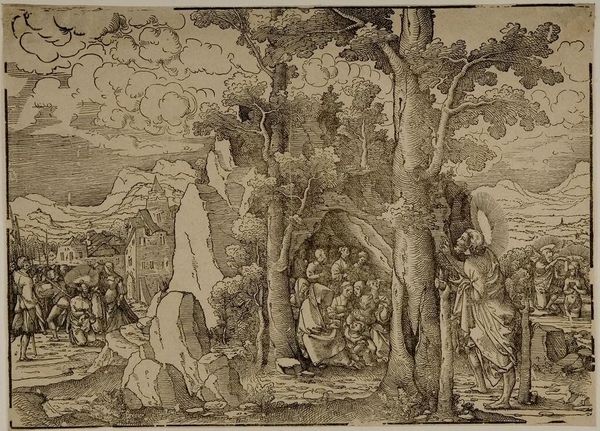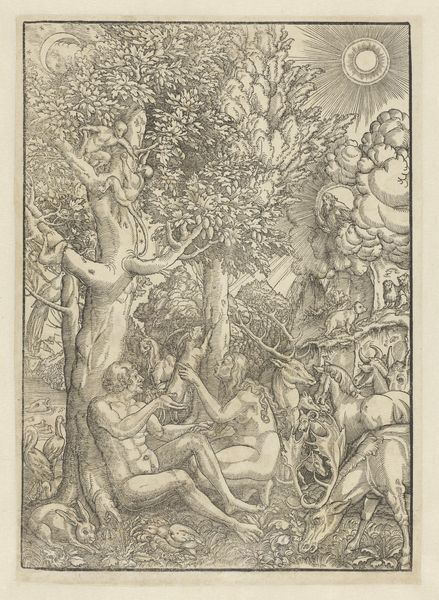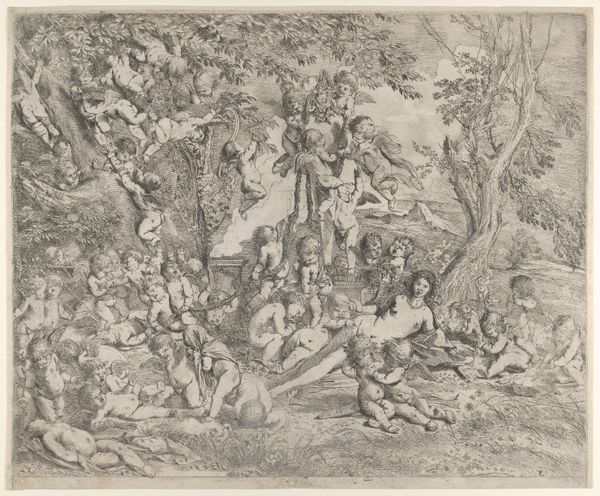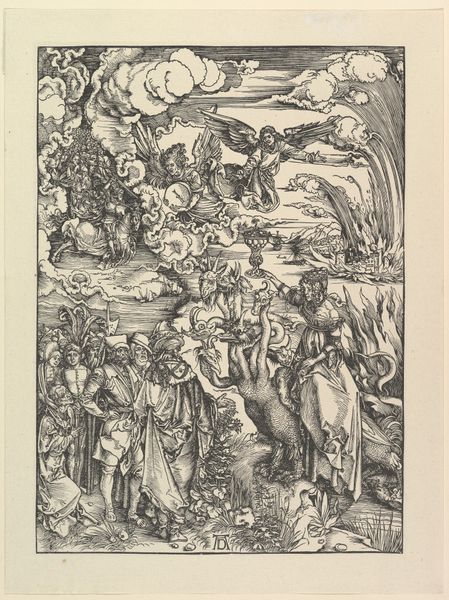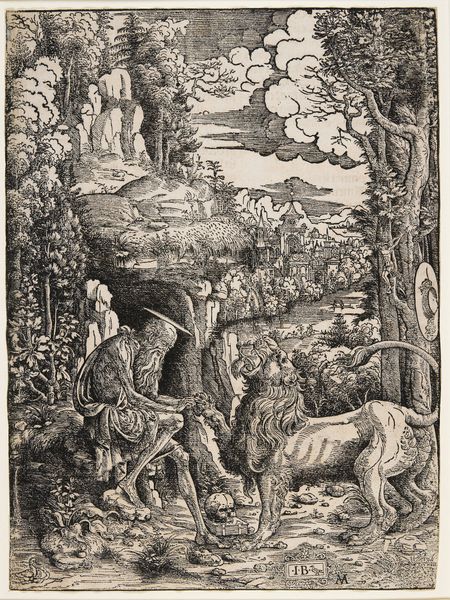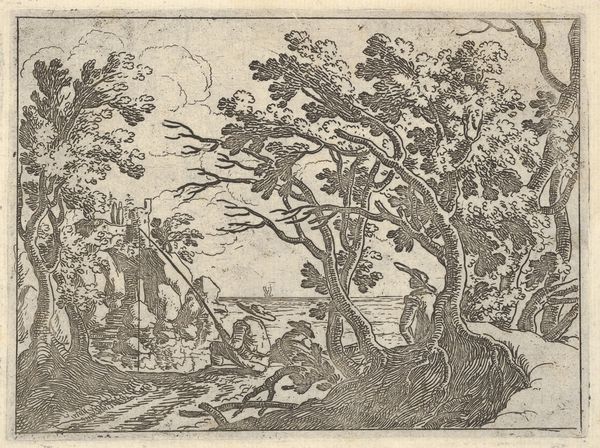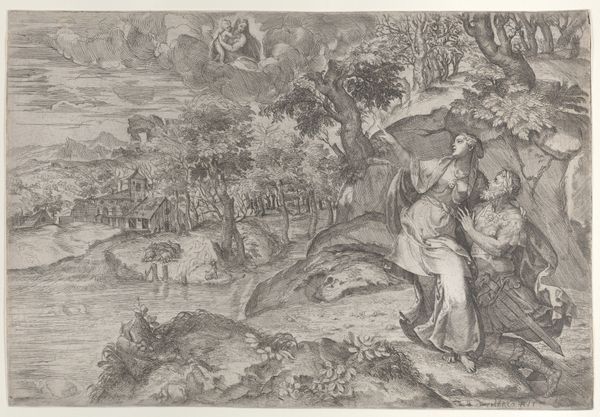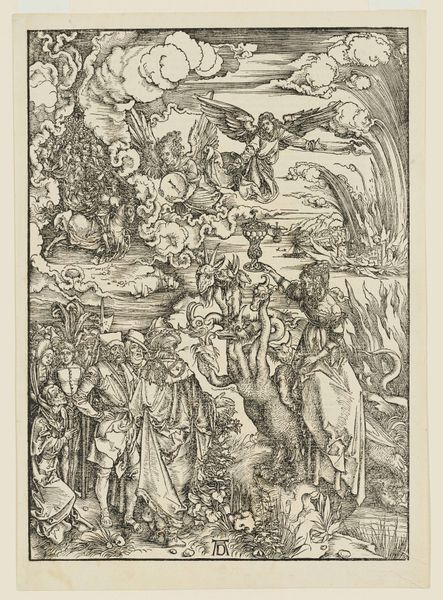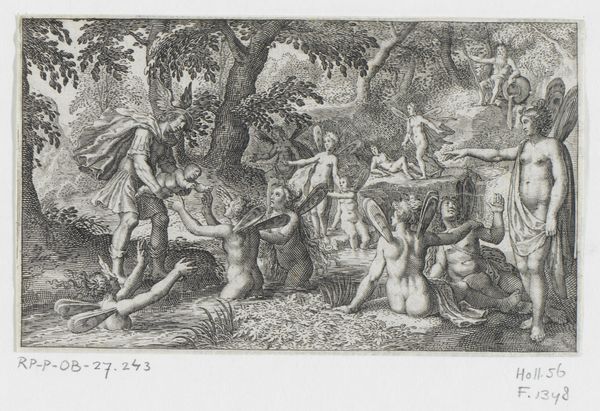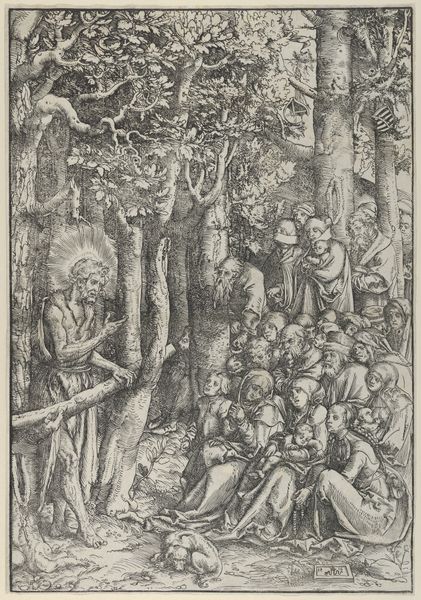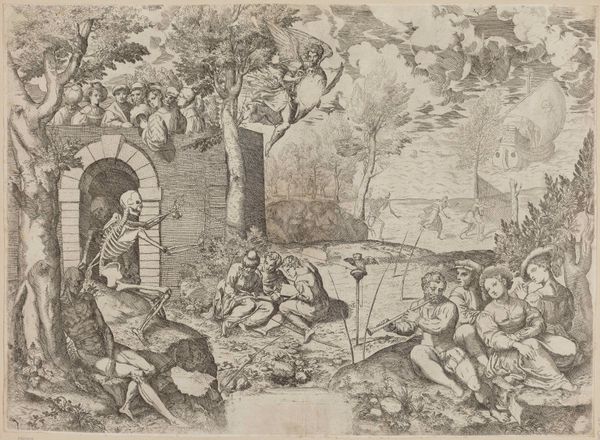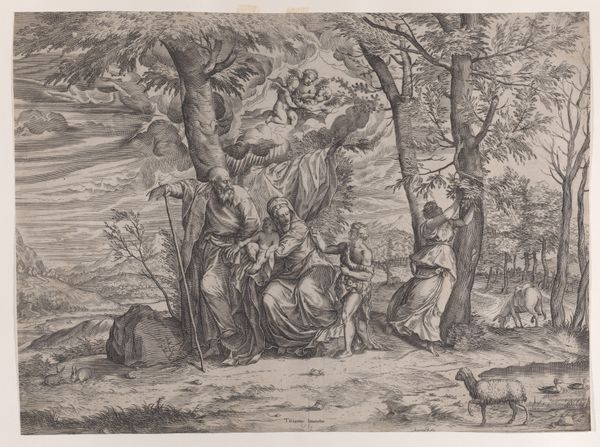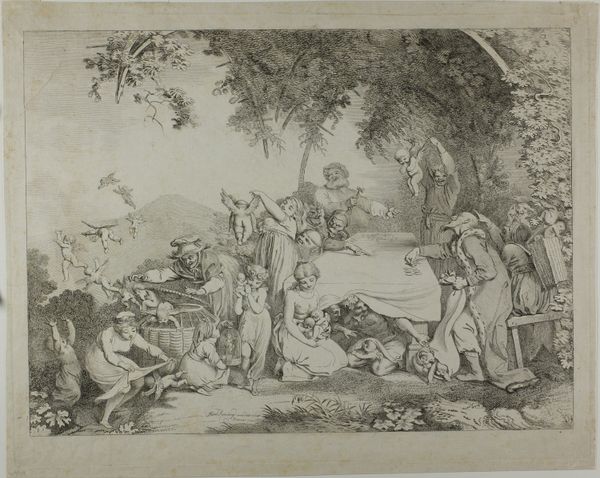
Scenes from the Life of Saint John the Baptist 1517 - 1527
0:00
0:00
print, woodcut
# print
#
landscape
#
figuration
#
11_renaissance
#
woodcut
#
line
#
history-painting
#
northern-renaissance
Dimensions: Sheet: 11 5/8 × 15 9/16 in. (29.6 × 39.6 cm)
Copyright: Public Domain
Editor: We're looking at "Scenes from the Life of Saint John the Baptist," a woodcut made by Frans Crabbe van Espleghem sometime between 1517 and 1527. It's teeming with figures, all rendered in this stark black and white. There's a really captivating sense of depth despite the limited tones. How do you interpret the symbolism present in this piece, and its reflection on cultural memory? Curator: The key is within those multitudes. Consider Saint John as the "voice crying out in the wilderness," an archetype representing dissent and spiritual awakening. The crowds—their huddled masses in that central cave—yearn. They seek guidance. Look at how Crabbe positions the wilderness itself; a landscape mirroring internal searching. How do the trees and craggy rocks function, psychologically, do you think? Editor: They create a sense of isolation and maybe the obstacles that people face when confronting something new, or challenging accepted norms. Curator: Exactly. Notice the recurring motif of enclosed spaces – the cave, the tight groups of figures. It hints at the societal constraints, the psychological pressures to conform. John stands apart, bathed in light, almost an exile by choice, isn’t he? The halo signifies the promise of spiritual enlightenment that often comes with such separation and dedication to higher ideals. What meaning might that contrast between light and shadow contain? Editor: I think the interplay underscores the struggle between awareness and ignorance, the readily visible and the obscured. So, by positioning John as a beacon within the dark forest, Crabbe is advocating the transformative power of questioning prevailing beliefs? Curator: Precisely! This woodcut functions as more than just a religious narrative; it becomes a potent symbol for individual thought within a broader cultural consciousness, continually renewing itself across time. What's your lasting impression of that renewal? Editor: Seeing the imagery as connected to universal questions makes the work still feel alive and significant even today. It isn't just a relic of the Renaissance.
Comments
No comments
Be the first to comment and join the conversation on the ultimate creative platform.
